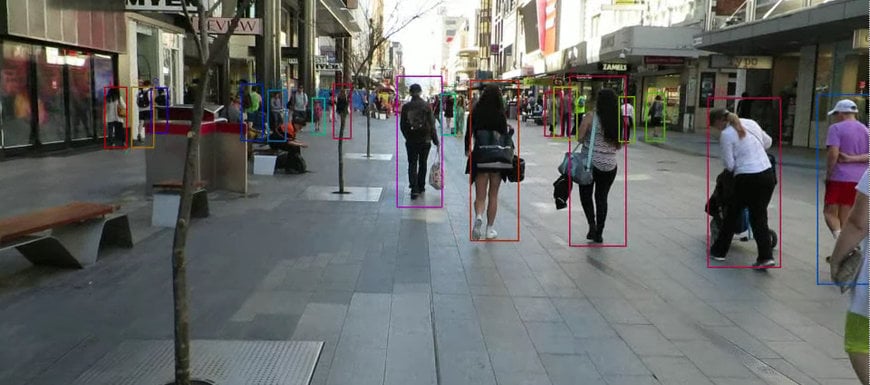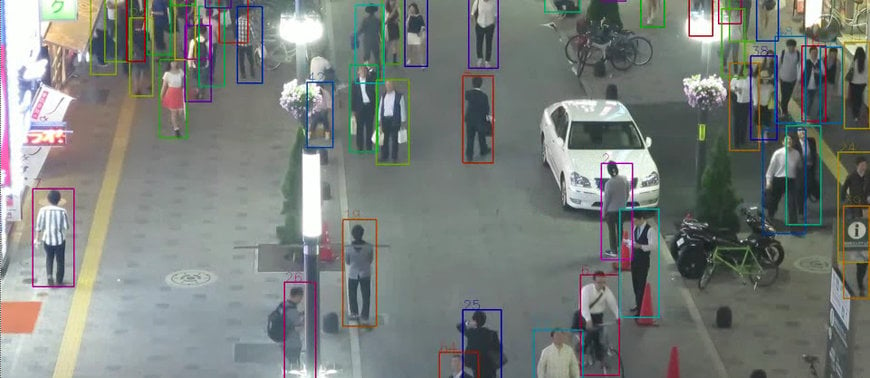www.industryemea.com
02
'20
Written on Modified on
ACTIA RANKS 8TH IN THE WORLD IN THE MOT CHALLENGE (MULTIPLE OBJECT TRACKING)
As part of its work in research and innovation, ACTIA is taking part in the MOT Challenge, the global benchmark competition for tracking objects in a video scene. So far, ACTIA has been performing well, ranking 8th in the world in metric accuracy analysis, known as MOTA, and 2nd in terms of tracking speed.

This challenge is an opportunity for the ACTIA group to put its research to the test on the world stage, testing functions that will expand its services on offer in the automotive sector and, in particular, the public transport sector.
The MOT Challenge, the ultimate benchmark for object tracking
Object tracking consists of estimating the positions of one or more objects through time, using measurements transmitted by one or more detectors. This function has many applications, such as the monitoring and behavioural analysis of people, animals and vehicles.
The MOT challenge is currently the main benchmark for the comparative analysis of algorithms for tracking multiple objects in a video scene. The challenge focuses on tracking pedestrians. The MOT Challenge provides three different detection sets with very low, medium and good quality, respectively.
ACTIA’s work is focused on the tracking algorithm using the good quality detector. The result rows calculate average performance across the three detectors.
ACTIA is ranked 8th in performance and 2nd in tracking speed, with 10.4 frames per second!
In the MOT Challenge, ACTIA is putting its ability to innovate to the test
The objective of the challenge is to follow the targets identified in a scene through time. The goal is to connect detections of the same object through time, even to fill in missed targets or remove any false positives.
Multiple object tracking via video is particularly useful in the automotive sector for tracking the trajectories of cars/pedestrians/cyclists in relation to vehicles, but also in the contexts of public transport and passenger counting, for tracking the trajectories of people getting on and off a bus, for example.
The MOT Challenge is an opportunity for the ACTIA group to take part in a global public demonstration of multi-person tracking which offers a multi-view function and varied, crowded scenes, making for a particularly difficult environment to monitor. ACTIA will publish the results of its work at the end of the year in a scientific journal.

Artificial intelligence at the heart of MOT
When monitoring indoor public places such as the underground, the height of the detector is limited by the height of the ceiling. In road traffic monitoring, it is limited to being placed on the available infrastructure. This creates frequent mismatches between targets through identity switches. When this happens, it becomes difficult, even impossible, to separate the image into the different targets, and the identity switches must therefore be modelled. This is where artificial intelligence comes to the system's rescue. This is known as target projection, where the AI models the non-visible targets.
An additional difficulty encountered is the temporal variability of the number of objects tracked, meaning those located in the measurement field at any given time. This means we have to explicitly manage the entrances and exits which the objects make to and from the measurement field through time.
Another constraint is categorising the objects. The system must be able to track objects belonging to multiple categories. In the real road-traffic and urban-transport scenarios, different categories of objects coincide. There are different types of vehicles such as lorries, vans, cars, motorcycles, bicycles, and users with different appearances: wearing a hat, carrying an umbrella, etc. Depending on the detector used, each object category will return a "signal" which varies greatly between categories. The system must be able to model this variability, so that it can correctly estimate the positions of very different-sized targets.
Artificial intelligence is what makes it possible to manage these constraints. The ACTIA system tested for MOT is a Deep Learning system for monitoring and categorising multiple objects by means of computer vision.

How can MOT be applied to public transport?
In the public transport sector, people tracking can be necessary for analysing traffic flow, user interactions with infrastructure, or simply for counting.
In particular, MOT will make it possible to manage an operator’s activity in real time, through providing reliable and customisable indicators. ACTIA wants to be able to guarantee high-accuracy analysis that allows the operator to make quick and effective decisions, improving the management of their network and fleet of vehicles.
Passenger counting also helps to manage human resources more intricately. By knowing when rush hour occurs on the network, the operator can optimally plan when and where staff need to be present in stations, helping to provide the best possible passenger experience. Knowing the real-time traffic on the network is essential for the manager from an economic point of view, as well as in terms of the quality of service provided to users and safety. People tracking is required for the behavioural analysis of customers on public transport.
Where else can MOT be applied?
In the field of surveillance, people tracking can be used to detect unusual or dangerous behaviour, so that people can intervene pre-emptively or to provide help in an emergency.
In the field of Intelligent Transport Systems, vehicle tracking is used to measure vehicle flows at intersections, with the aim of making urban and road transport more efficient. Road traffic monitoring is also required for driving assistance and anti-collision systems.
Finally, in the field of Intelligent Vehicles, Advanced Driver Assistance Systems (ADAS), which are on-board systems, offer, among other things, the ability to detect obstacles in real time.
For ACTIA, these are all potential applications of MOT, and ACTIA is pouring all its energy into researching and innovating at the core of the future challenges for mobility. ACTIA is approaching these challenges relating to safety, comfort, connectivity and energy performance using its long-standing expertise in electronic architecture.
www.actia.com

